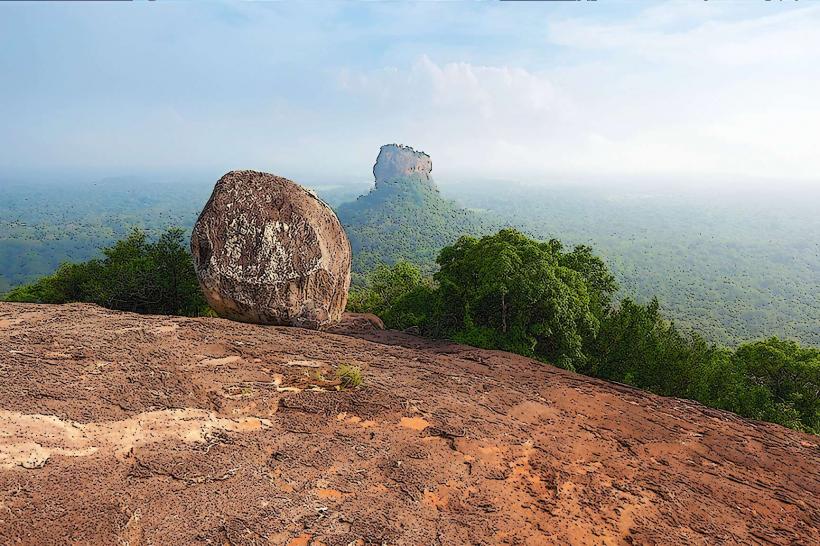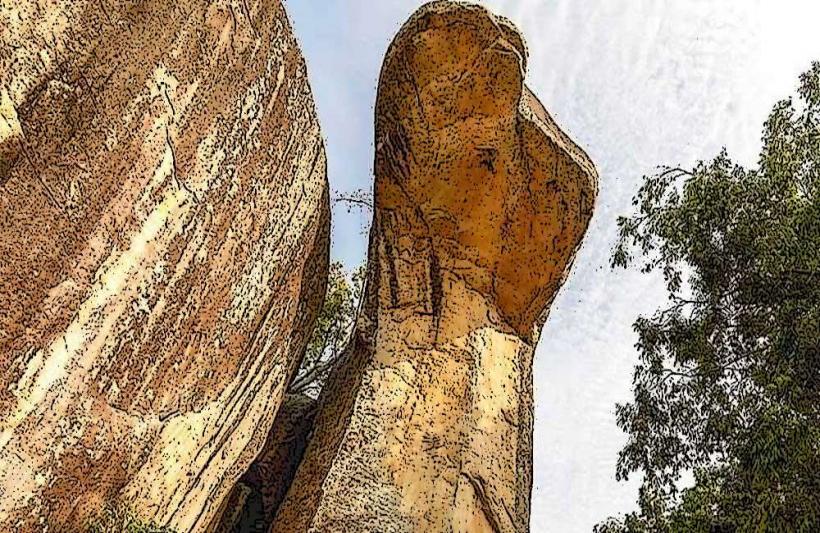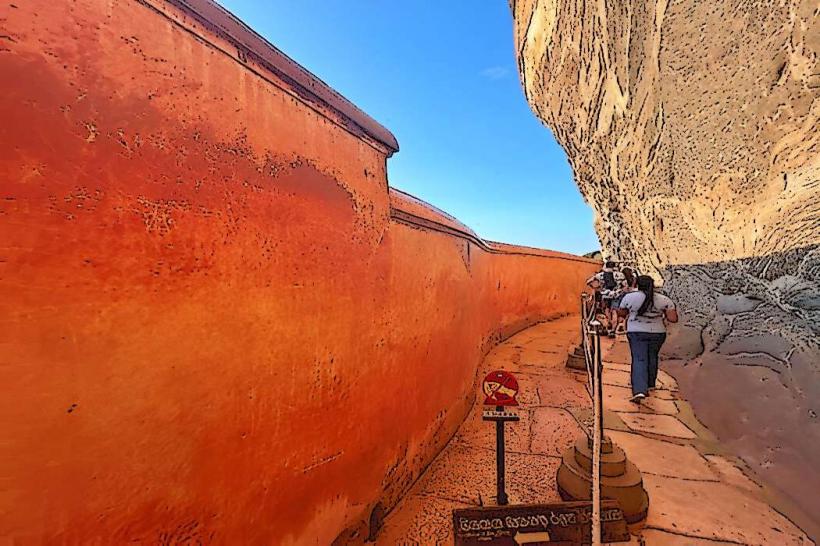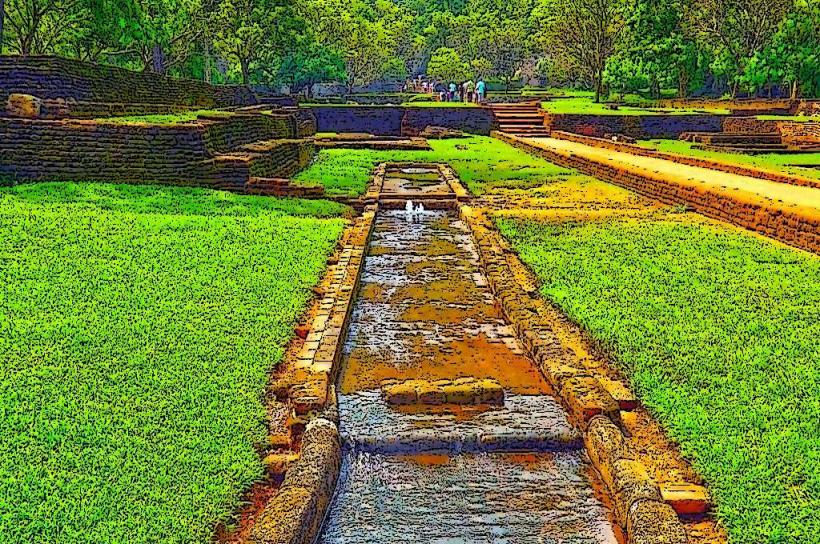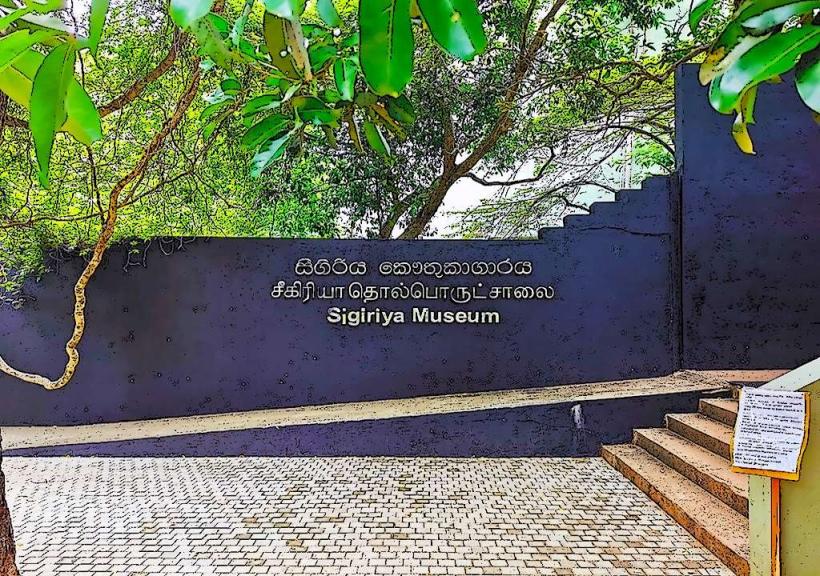Information
Landmark: Sigiriya Rock FortressCity: Sigiriya
Country: Sri Lanka
Continent: Asia
Sigiriya Rock Fortress, Sri Lanka
Sigiriya, also known as the Lion’s Rock, is an ancient rock fortress located in the Central Province of Sri Lanka, near the town of Dambulla. It is one of Sri Lanka’s most famous landmarks and a UNESCO World Heritage Site, renowned for its historical significance, stunning architecture, and natural beauty. Sigiriya is an iconic symbol of Sri Lanka's rich cultural and architectural heritage, drawing visitors from around the world.
Overview
- Name: Sigiriya Rock Fortress (Lion's Rock)
- Location: Sigiriya, Central Province, Sri Lanka
- Significance: Ancient royal palace and fortress, archaeological site
- Period: 5th century CE, during the reign of King Kashyapa
- UNESCO World Heritage Site: Inscribed in 1982
- Height: Approximately 200 meters (660 feet) above the surrounding landscape
- Current State: Well-preserved ruins and archaeological site
Historical and Cultural Significance
Construction and Origins:
- Sigiriya was built during the reign of King Kashyapa (477–495 CE), who is believed to have chosen this site as a strategic location for his royal palace and fortress. The rock, a massive volcanic outcrop, was transformed into a fortified complex and royal residence.
- The king, having usurped the throne from his father, King Dhatusena, fled to the rock fortress after a dispute with his brother, Moggallana, who sought to reclaim the throne. Sigiriya was chosen for its natural defenses and strategic position.
- The construction of the fortress involved extensive engineering and landscaping, with water gardens, terraces, and elaborate frescoes. King Kashyapa also used the rock’s summit to build a palace and defensive structures, making it one of the most remarkable feats of ancient Sri Lankan architecture.
Decline and Abandonment:
- After King Kashyapa’s death in 495 CE, the fortress gradually lost its significance as a royal residence. Sigiriya was later used as a Buddhist monastery for several centuries before being abandoned.
- Over time, much of the site fell into disrepair, and the rock became a popular pilgrimage site, particularly for Buddhists, due to its association with the early history of Sri Lanka.
Rediscovery and Modern Significance:
- Sigiriya was rediscovered in the 19th century by British explorers and archaeologists, who began to excavate the site and uncover its fascinating features. Today, it stands as one of Sri Lanka’s most visited and revered historical sites.
Key Features of Sigiriya Rock Fortress
The Lion’s Gate and Staircase:
- One of the most iconic features of Sigiriya is the Lion's Gate. The entrance to the summit is marked by massive stone paws, which form part of a giant lion statue. Visitors must pass through the lion's mouth and climb a spiral staircase that leads to the summit of the rock.
- The Lion’s Gate and the staircase are part of a grand entrance, which served as both a defensive and aesthetic feature of the fortress. The lion's paws and remnants of the lion's head add to the dramatic impression of the site.
Frescoes of Sigiriya:
- On the western face of the rock, visitors can find a series of frescoes depicting beautiful women. These frescoes, known as the Sigiriya Damsels, are painted in vibrant colors and are considered one of the finest examples of ancient Sri Lankan wall paintings. The frescoes are thought to represent celestial nymphs or royal attendants, symbolizing beauty and fertility.
- The frescoes are painted on a smooth, plaster surface and are located in a sheltered area halfway up the rock.
Mirror Wall:
- The Mirror Wall is a polished stone wall located near the frescoes, which was originally so shiny that it reflected the images of visitors. It is said that the wall was once covered in inscriptions, many of which are still visible today. The inscriptions are graffiti, left by visitors to Sigiriya from the 7th century onwards, and provide a fascinating glimpse into the thoughts and impressions of past travelers.
- The Mirror Wall is famous for its smooth surface and poetic inscriptions, some of which are in verse.
The Summit of Sigiriya:
- The summit of Sigiriya Rock was originally home to a royal palace and complex, complete with gardens, pools, and other amenities for the king. Visitors can explore the ruins of the palace at the top, which include remnants of buildings, terraces, and water tanks that were used for storing and distributing water to the palace.
- The summit offers stunning panoramic views of the surrounding countryside, including the nearby Pidurangala Rock, Kandalama Lake, and the vast forested plains.
Water Gardens:
- The water gardens of Sigiriya are located at the base of the rock and are considered one of the most elaborate examples of ancient hydraulic engineering. The gardens consist of ponds, fountains, and canals that were designed to create an aesthetically pleasing and functional landscape for the royal palace.
- The water gardens are thought to have been inspired by Persian garden designs, showcasing advanced knowledge of irrigation and water management.
Terraces and Ramparts:
- The site features a series of terraces and ramparts that connect the different parts of the fortress. The terraces were used for both practical purposes, such as storage and defense, and for aesthetic purposes, such as creating pathways and decorative features.
- The ramparts were built to protect the fortress from invasion and provide a strategic vantage point for spotting approaching enemies.
Religious and Spiritual Importance
Buddhist Influence:
- After King Kashyapa’s death, Sigiriya was converted into a Buddhist monastery, and the site remained a place of religious significance for many years. Buddhist monks lived in the caves and ruins around the base of the rock, and the site became a place of meditation and spiritual reflection.
- The Buddhist influence is evident in some of the cave temples and inscriptions around the site, which serve as a reminder of the monastery’s long history.
Cultural and Historical Legacy:
- Sigiriya is an important cultural and historical landmark for Sri Lanka, representing both the artistic achievements of the ancient Sinhalese and the strategic prowess of the early kings. The site is also a symbol of Sri Lanka’s rich Buddhist heritage and its architectural innovations.
Visitor Experience
Climbing Sigiriya:
- Visitors to Sigiriya can climb the rock to reach the summit, following a series of staircases, pathways, and metal walkways that make the ascent more accessible. The climb can take between 30 minutes to 1 hour, depending on the route taken and the number of stops to explore the frescoes and other features along the way.
- The views from the top are spectacular, offering sweeping vistas of the surrounding landscape and the ancient city of Anuradhapura.
Exploring the Site:
- The frescoes, Mirror Wall, and water gardens are must-see features, and visitors can explore these areas before or after the climb to the top. The landscape gardens surrounding the fortress are also worth a visit.
- Sigiriya offers a unique combination of natural beauty, historical ruins, and architectural marvels, making it a fascinating destination for history lovers, nature enthusiasts, and spiritual seekers.
Photography:
- Sigiriya is a photographer’s paradise, with dramatic shots to capture from the entrance (Lion’s Gate) to the summit and the surrounding countryside. The site offers plenty of opportunities for both wide-angle shots and close-up images of its ancient carvings, frescoes, and scenic views.
Conclusion
Sigiriya Rock Fortress is a masterpiece of ancient Sri Lankan architecture and engineering, offering a glimpse into the ingenuity and culture of the ancient Sinhalese. The fortress’s stunning location, historical significance, and artistic beauty make it a must-visit destination for travelers seeking to understand Sri Lanka’s rich history. The combination of natural beauty, artistic grandeur, and historical intrigue has made Sigiriya one of the country’s most iconic landmarks, celebrated worldwide as a symbol of Sri Lanka’s cultural heritage.

